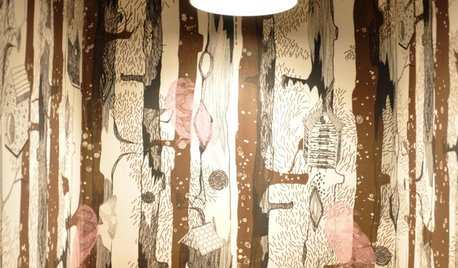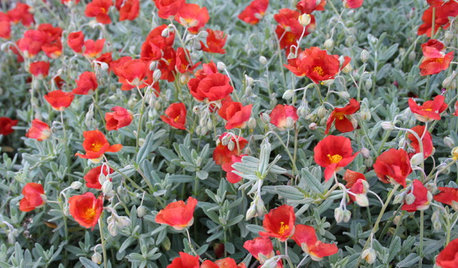Black Spot on F. Lyrata
ces797
15 years ago
Related Stories

DECORATING GUIDESCool Wallpaper Spotted: Wait, No It's Fabric!
Woodsy-modern pattern adds whimsy and color to a baby-friendly bathroom
Full Story
COLORGet a Soft Spot for Sea-Glass Green
Soften a room's look by washing its walls in this delightfully airy shade, no sand in your shoes required
Full Story
GARDENING AND LANDSCAPING10 Reasons to Use Black in Your Outside Space
It’s become a favorite shade to use inside, but now black is migrating out to gardens, patios and balconies — with dramatic results
Full Story
FLOWERSRudbeckia Mania: Go Beyond Black-Eyed Susan in the Garden
Branch out from typical nursery fare, with lesser-known Rudbeckia species that have delightfully unexpected features
Full Story
WHITERoom of the Day: Bye-Bye, Black Bidet — Hello, Classic Carrara
Neutral-colored materials combine with eclectic accessories to prepare a master bath for resale while adding personal style
Full Story
MIDCENTURY HOMESHouzz Tour: Pools and Martinis Inspire a Palm Springs Remodel
Weighed down by black-heavy ’80s style, a California desert home gets a fun and lighthearted look just right for its midcentury roots
Full Story
COLOR10 Reasons to Make a Splash With Tomato Red
You won’t duck at these tomatoes. See how bold red shades can play up architecture, light up a dark spot and add drama
Full Story
HOMES AROUND THE WORLDWorld of Design: 11 Book Lovers and Where They Like to Read
Bibliophiles across the globe reveal their top books and favorite reading spots, from a 2-story library to an artfully curated book nook
Full Story
GARDENING GUIDESGreat Design Plant: Sunrose Dazzles on Dry Slopes
Abundant blooms and attractive foliage make this plant a welcome sight in sunny, well-drained spots
Full Story










tapla (mid-Michigan, USDA z5b-6a)
ces797Original Author
Related Professionals
Comstock Park Landscape Architects & Landscape Designers · Folsom Landscape Architects & Landscape Designers · Panama City Landscape Architects & Landscape Designers · Elgin Landscape Contractors · Waterbury Landscape Contractors · Cliffside Park Landscape Contractors · Del Aire Landscape Contractors · El Sobrante Landscape Contractors · Fort Payne Landscape Contractors · Las Vegas Landscape Contractors · San Benito Landscape Contractors · Vashon Landscape Contractors · Four Corners Landscape Contractors · Quartz Hill Landscape Contractors · Struthers Interior Designers & Decoratorstapla (mid-Michigan, USDA z5b-6a)
ces797Original Author
tapla (mid-Michigan, USDA z5b-6a)
petrushka (7b)